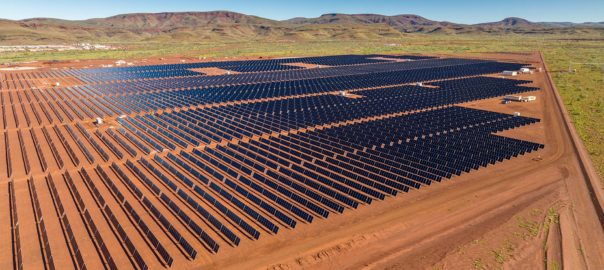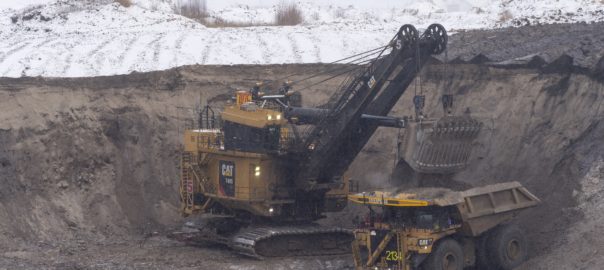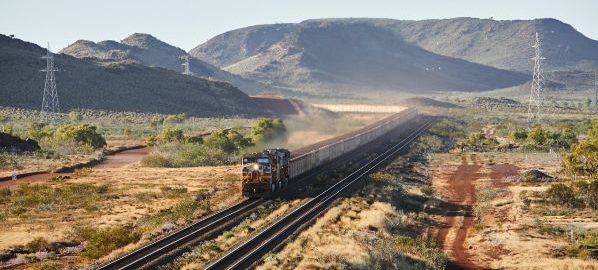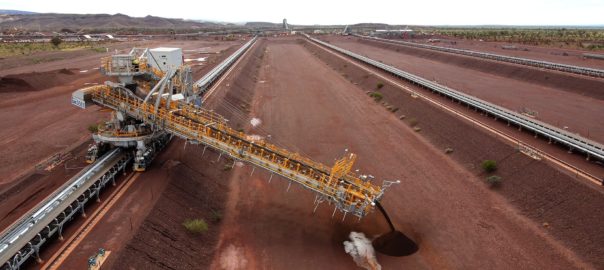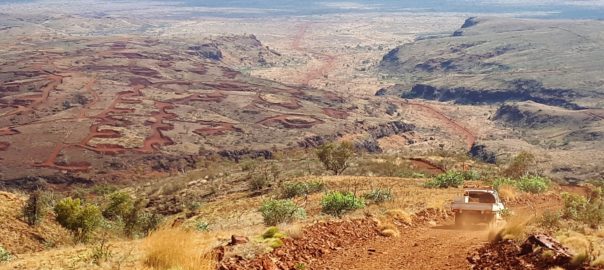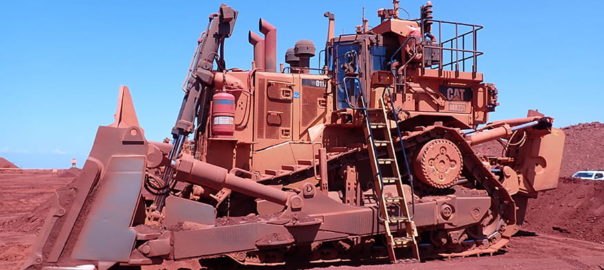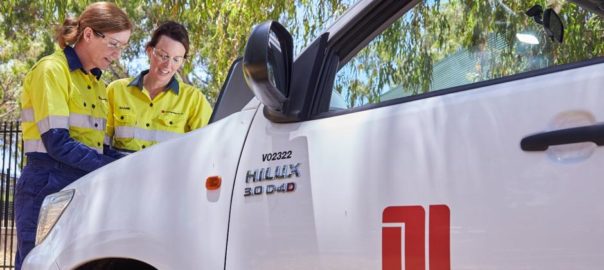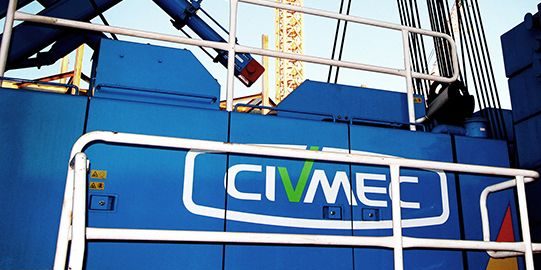Rio Tinto says it is planning to invest a further $600 million in renewable energy assets in the Pilbara as part of the company’s efforts to decarbonise its Western Australian iron ore operations.
The investment will fund the construction of two 100 MW solar power facilities as well as 200 MWh of on-grid battery storage in the Pilbara by 2026. This is in addition to the 34 MW of solar power installed at the recently commissioned Gudai-Darri iron ore mine (pictured).
Initial funding for Rio Tinto’s first major standalone solar farm on the Pilbara coast has been approved, a 100 MW solar photovoltaic system and associated transmission infrastructure. Construction, which will involve the installation of approximately 225,000 solar panels built to withstand the Pilbara’s cyclonic conditions, is expected to start next year ahead of project commissioning in 2025.
Rio Tinto is engaging with state and local authorities as well as Traditional Owners about the project and relevant approvals. Final capital approval is expected in the June quarter of next year.
These new projects combined are expected to abate around 300,000 t of CO2, equivalent to a 10% reduction in total Scope 1 and 2 emissions from Rio Tinto’s iron ore business in the Pilbara based on 2021 levels. It will also reduce gas costs by approximately $55 million per year at current prices by displacing around 30% of the company’s current gas consumption in the Pilbara.
This new investment forms part of Rio Tinto’s previously announced plan to complete installation of a 1 GW renewable energy system in the Pilbara as part of a global commitment to invest approximately $7.5 billion to halve emissions by 2030. This will include significant investment in transmission infrastructure to support full decarbonisation of the Pilbara including electrification of mobile and rail equipment beyond 2030 which is estimated to require up to 3 GW of installed renewable energy assets.
Rio Tinto Iron Ore Chief Executive, Simon Trott, said: “The Pilbara is extremely well-positioned to take advantage of renewable power with land, access to people, and abundant wind and solar resources. Our Pilbara electricity grid is the largest privately-owned grid in Australia, ensuring that we have the initial infrastructure required to enable a transition to renewable energy.
“We expect to invest around $3 billion to install renewable energy assets as well as transmission and storage upgrades in the Pilbara as part of our commitment to halve our emissions from the Pilbara by the end of this decade.”







